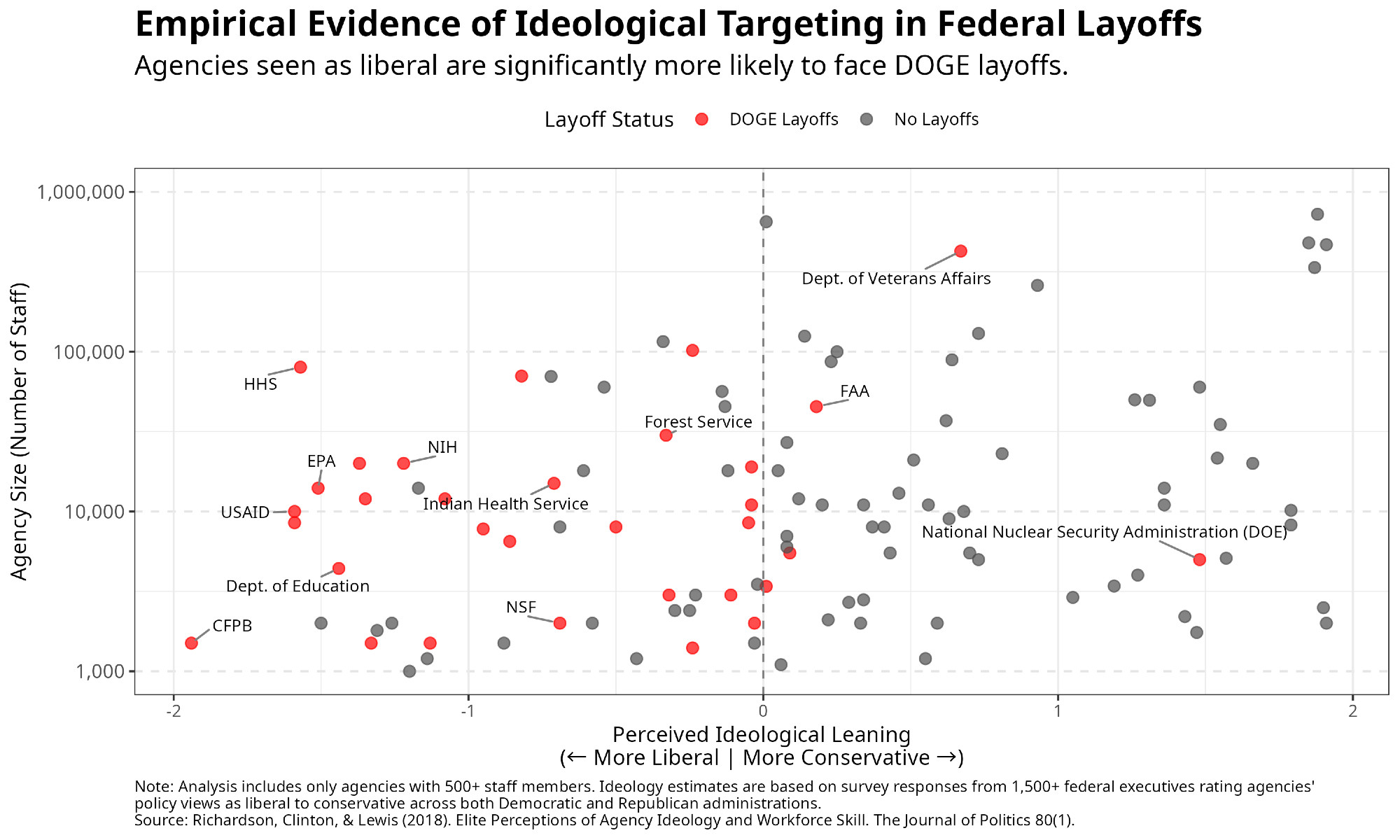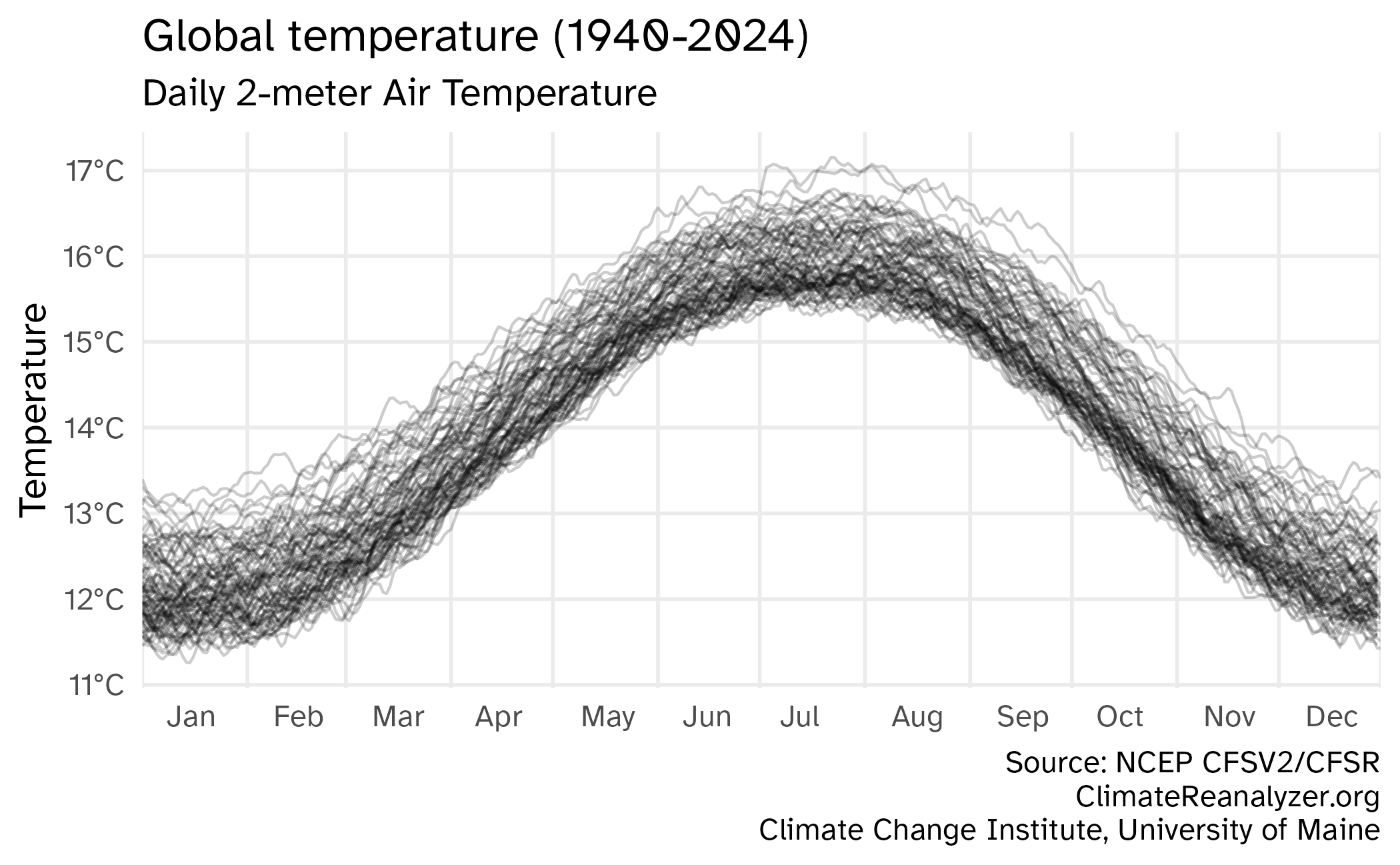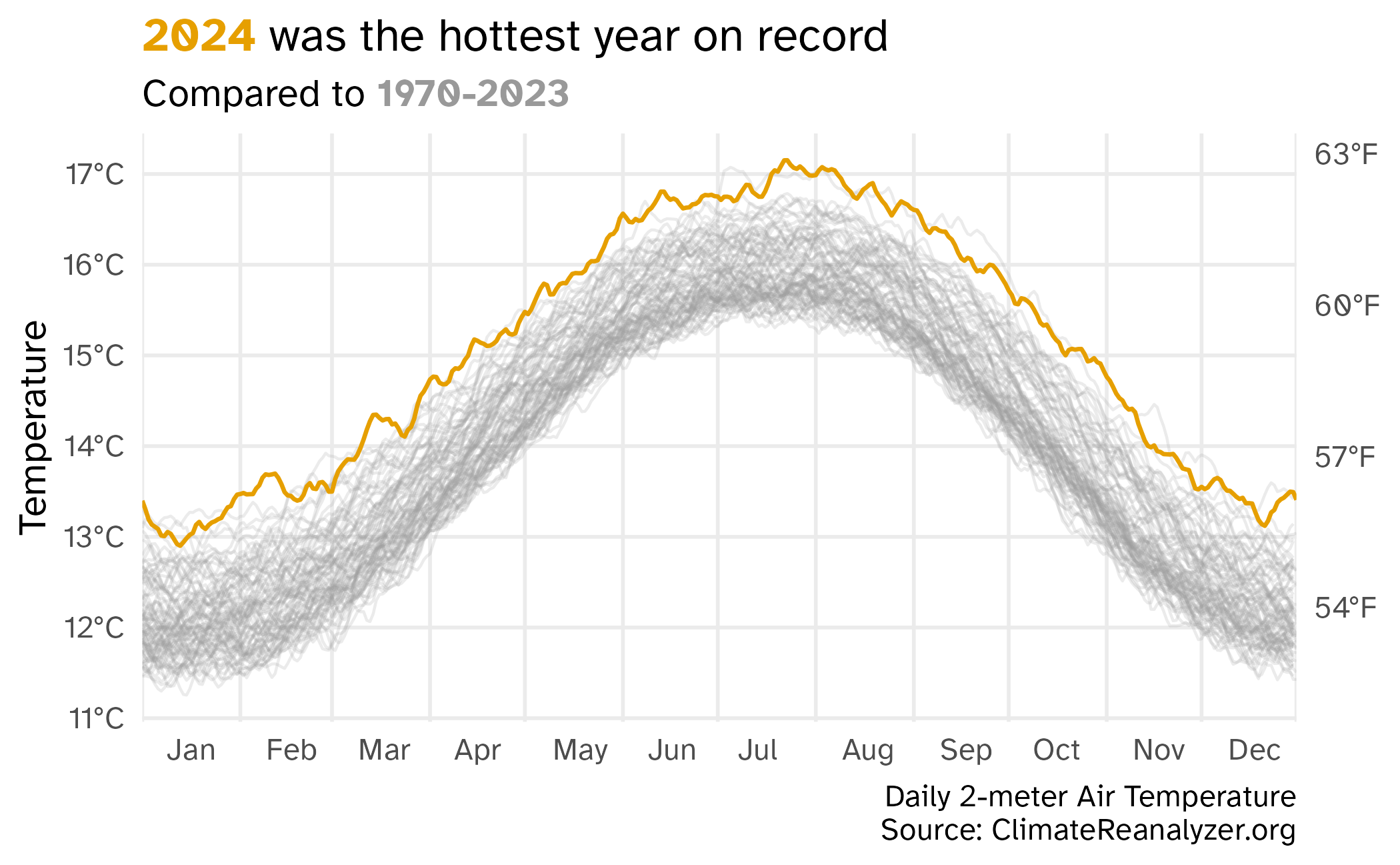
Telling the story with data
Lecture 11
Cornell University
INFO 3312/5312 - Spring 2025
February 27, 2025
Announcements
Announcements
- Project presentations next week
Visualization critique
Source: Adam Bonica via Bluesky
Telling a story
Crafting a narrative
A story is a set of observations, facts, or events, true or invented, that are presented in a specific order such that they create an emotional reaction in the audience.
- Three-act structure (setup, confrontation, resolution)
- Five-act structure (introduction, rise, climax, return/fall, resolution)
- Linear narrative
- Nonlinear narrative
Data communication uses data to tell a story
Multiple ways of telling a story
Sequential plots: Motivation, then resolution
A single plot: Resolution, and hidden in it motivation
Simplicity vs. complexity
When you’re trying to show too much data at once you may end up not showing anything.
Never assume your audience can rapidly process complex visual displays
Don’t add variables to your plot that are tangential to your story
Don’t jump straight to a highly complex figure; first show an easily digestible subset (e.g., show one facet first)
Aim for memorable, but clear
Consistency vs. repetitiveness
Be consistent but don’t be repetitive.
Use consistent features throughout plots (e.g., same color represents same level on all plots)
Aim to use a different type of visualization for each distinct analysis
Designing effective visualizations
Keep it simple

Use color to draw attention


Clarify the story
Order matters
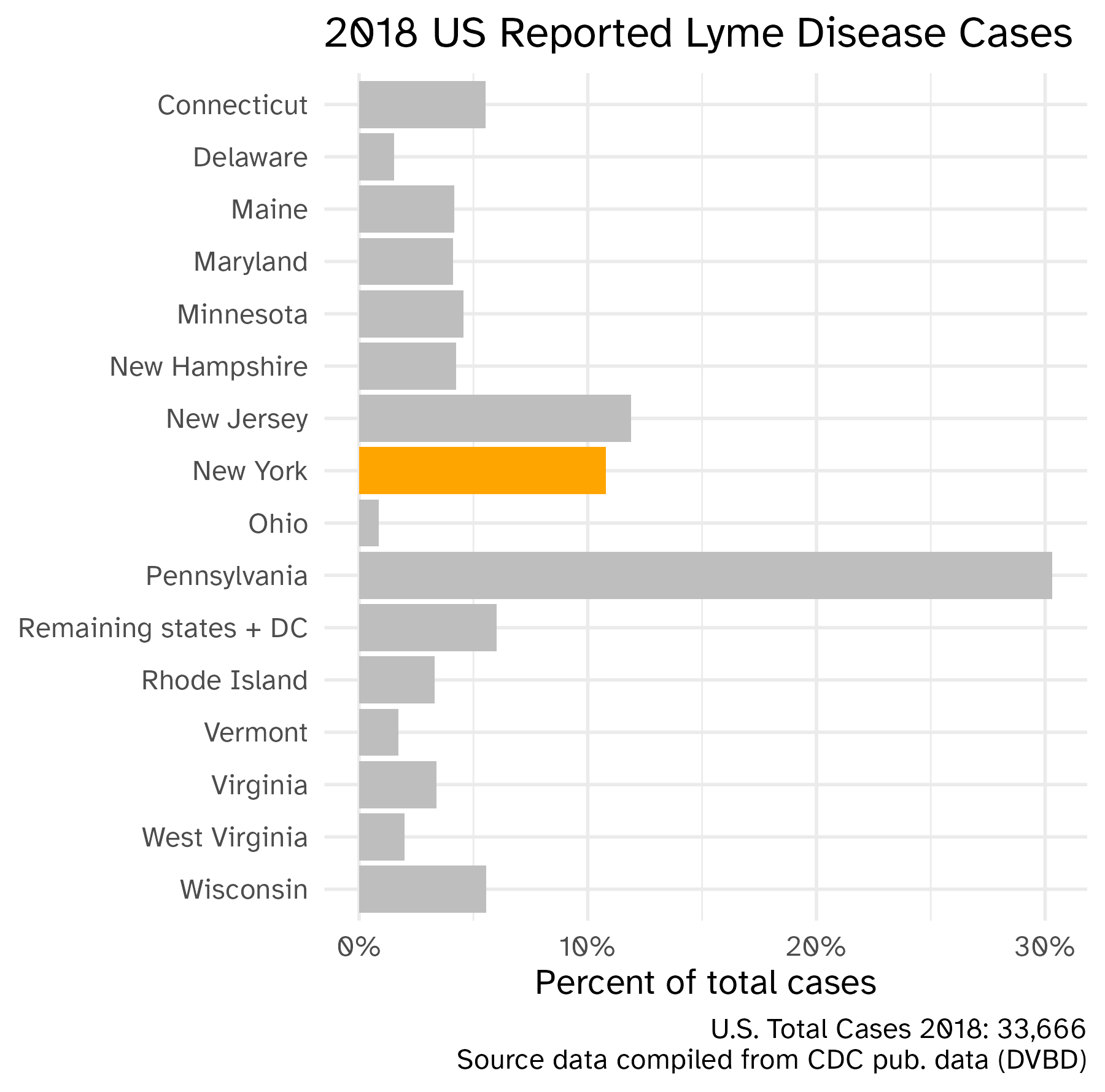
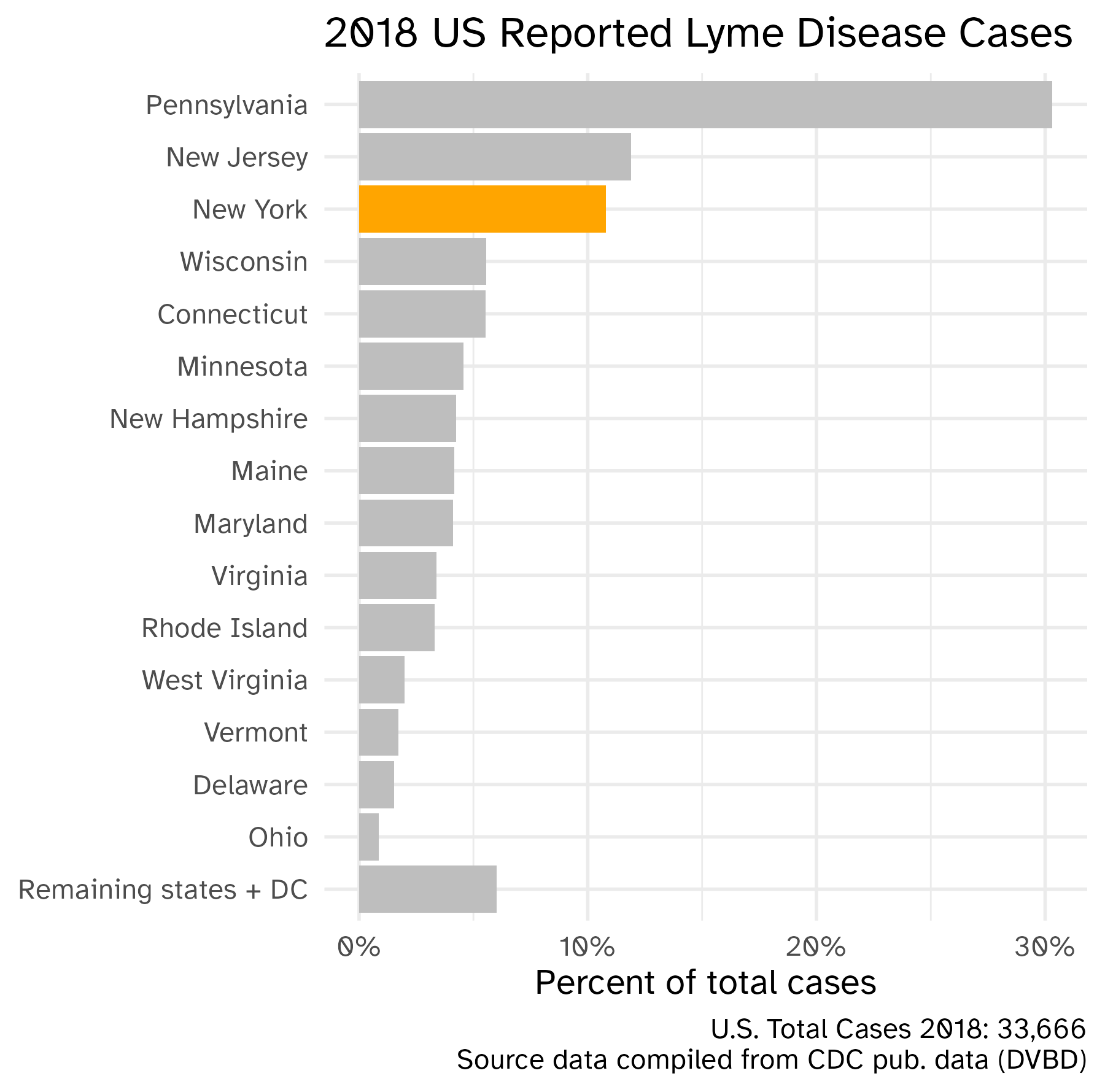
Reduce cognitive load
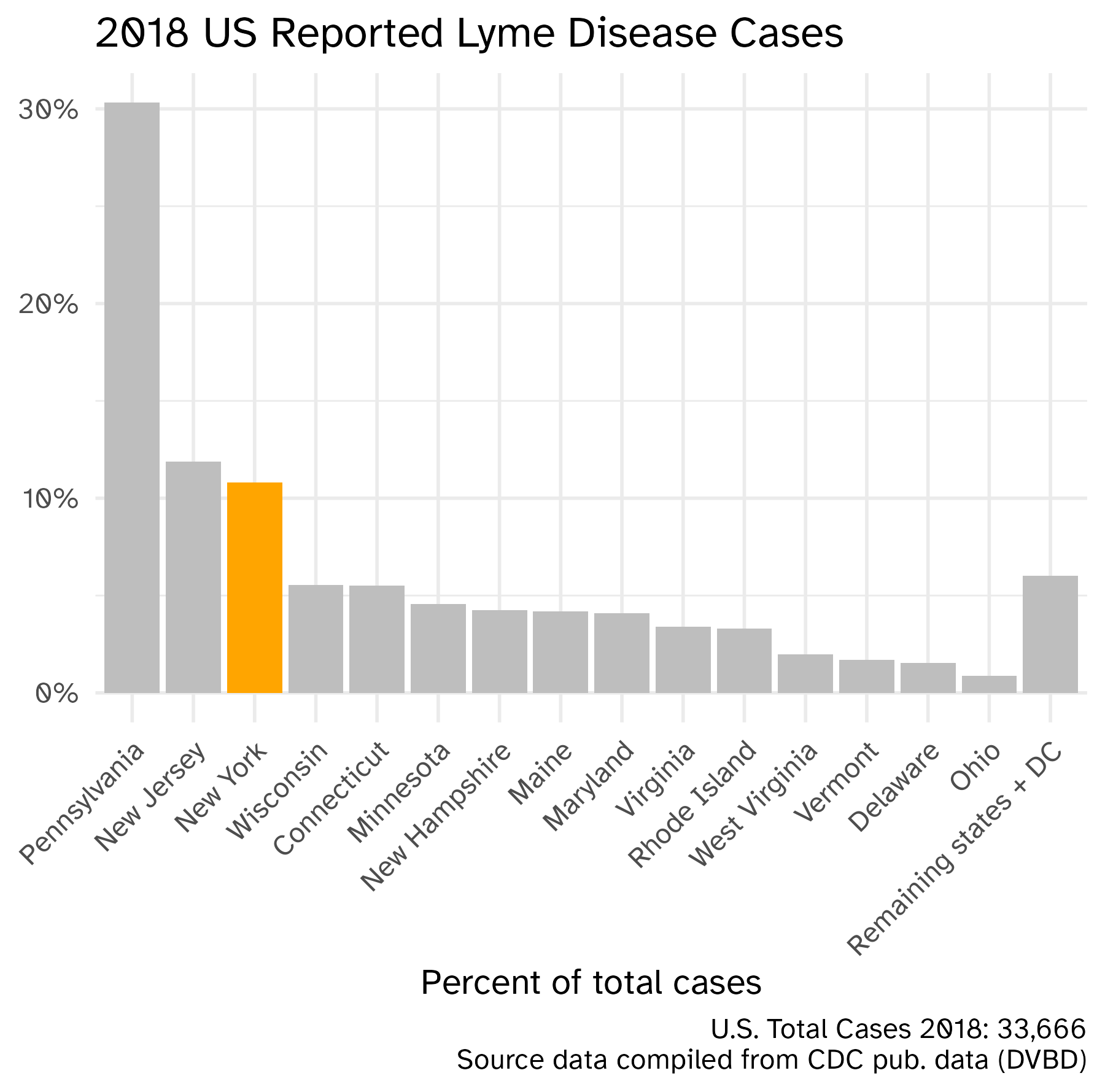
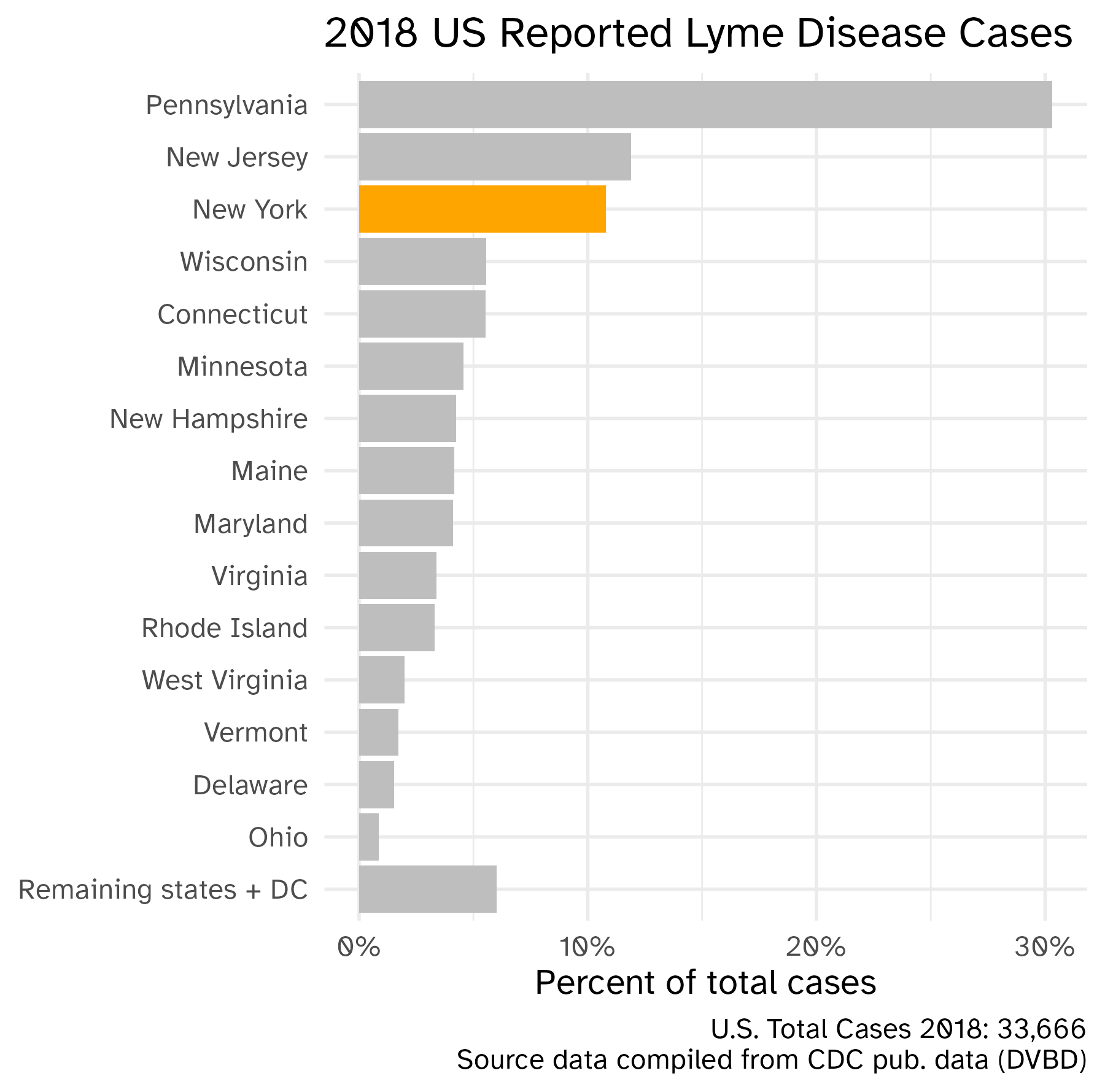
http://www.storytellingwithdata.com/2012/09/some-finer-points-of-data-visualization.html
Clearly indicate missing data
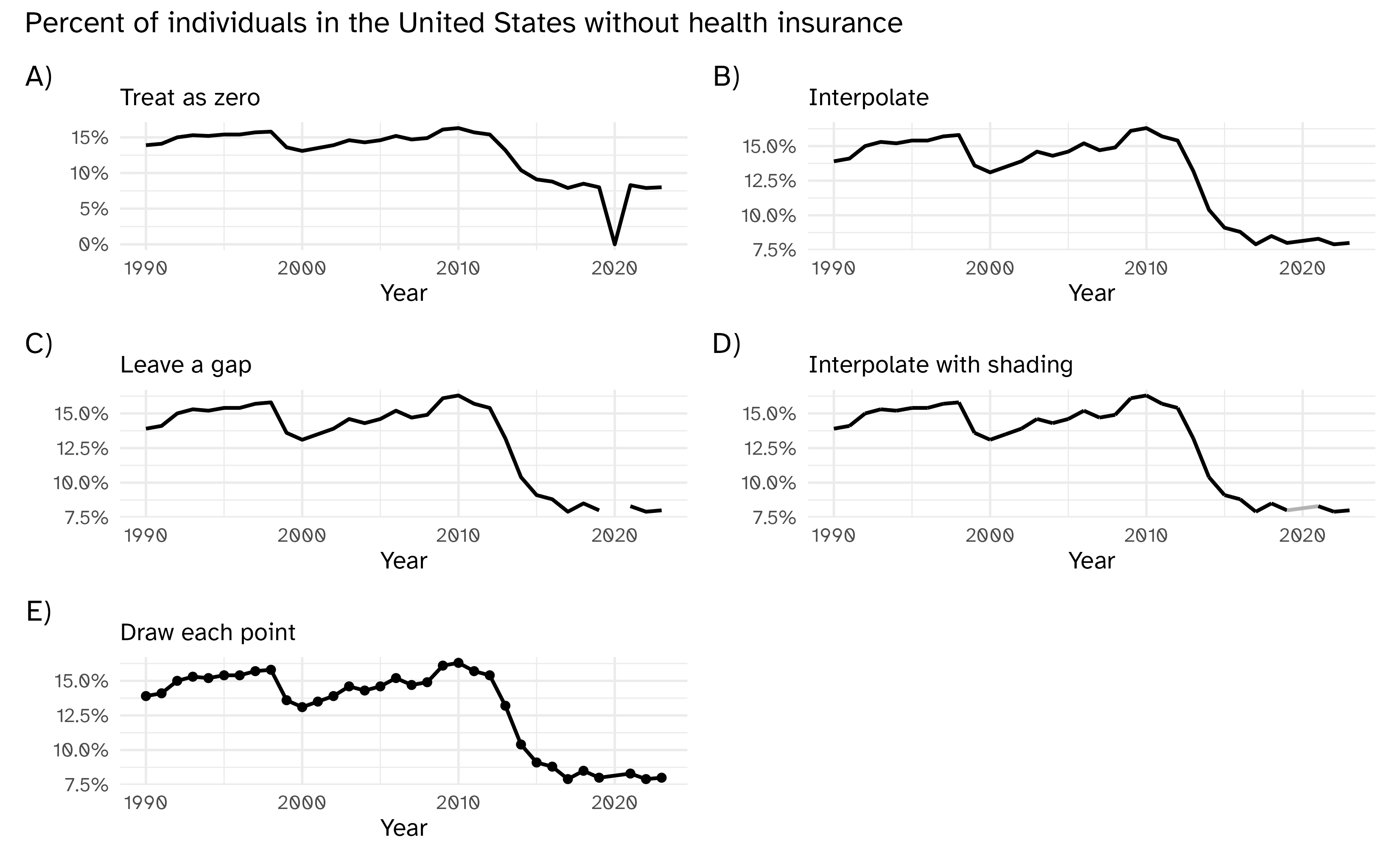
Use descriptive titles
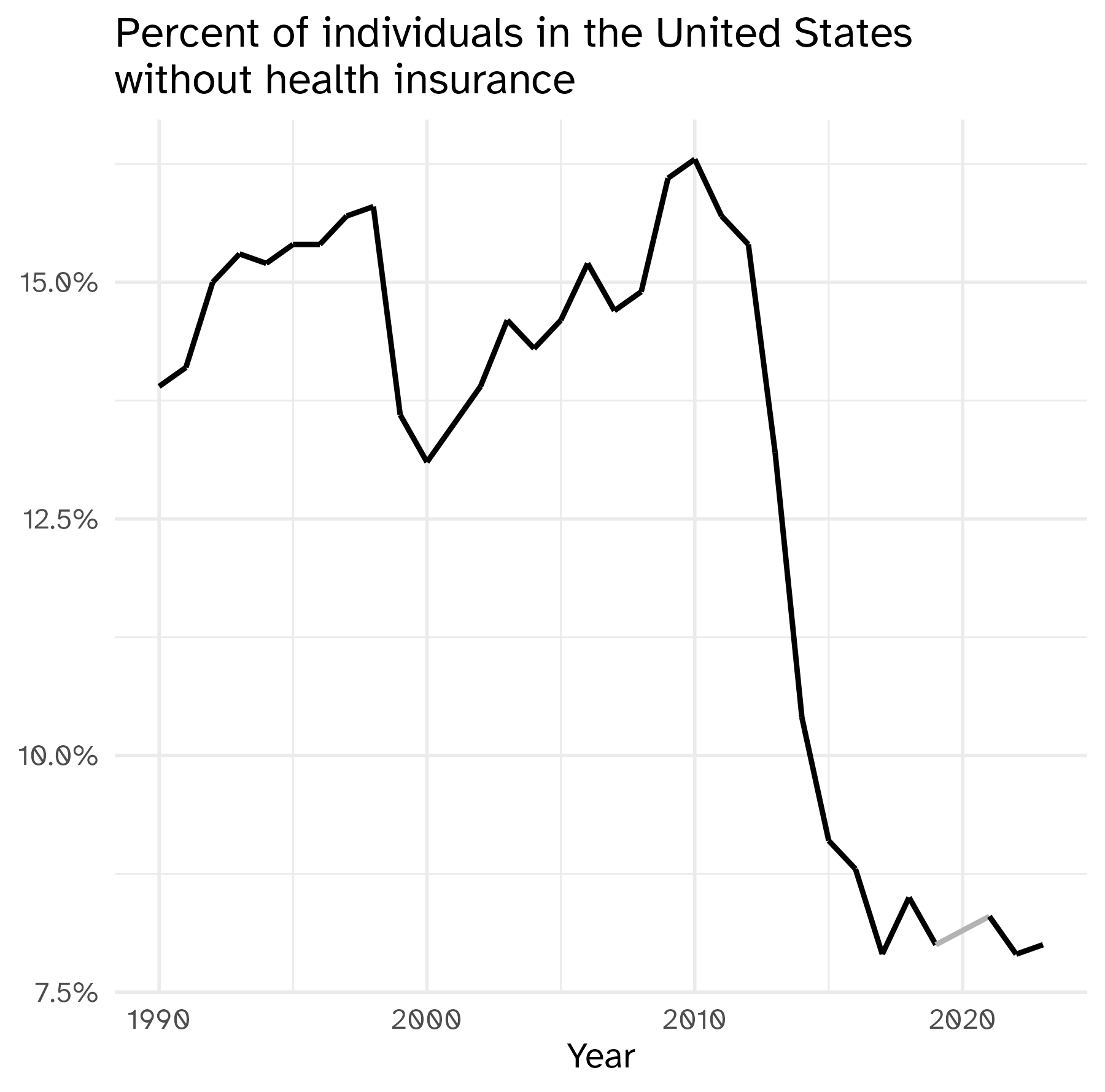

Annotate figures
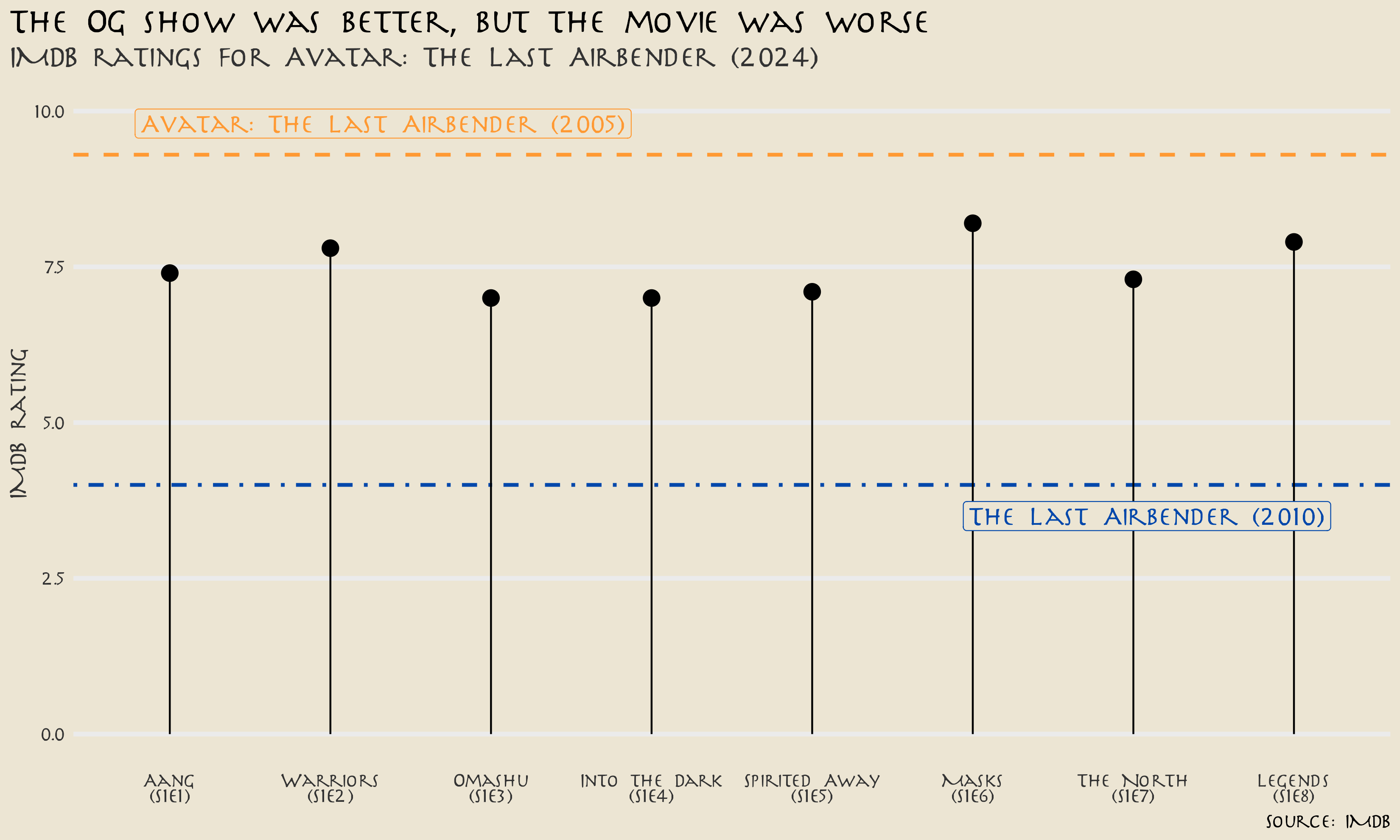
Untangle a messy line chart
Online restaurant reservations
# A tibble: 3,420 × 5
type name abbrev date pct_change
<chr> <chr> <chr> <date> <dbl>
1 country United States US 2020-04-01 -1.00
2 country United States US 2020-04-02 -1.00
3 country United States US 2020-04-03 -1.00
4 country United States US 2020-04-04 -1.00
5 country United States US 2020-04-05 -1.00
6 country United States US 2020-04-06 -1
7 country United States US 2020-04-07 -1.00
8 country United States US 2020-04-08 -1.00
9 country United States US 2020-04-09 -1
10 country United States US 2020-04-10 -1.00
# ℹ 3,410 more rowsSource: Flowing Data
All the trends

Highlight specific areas

Small multiples
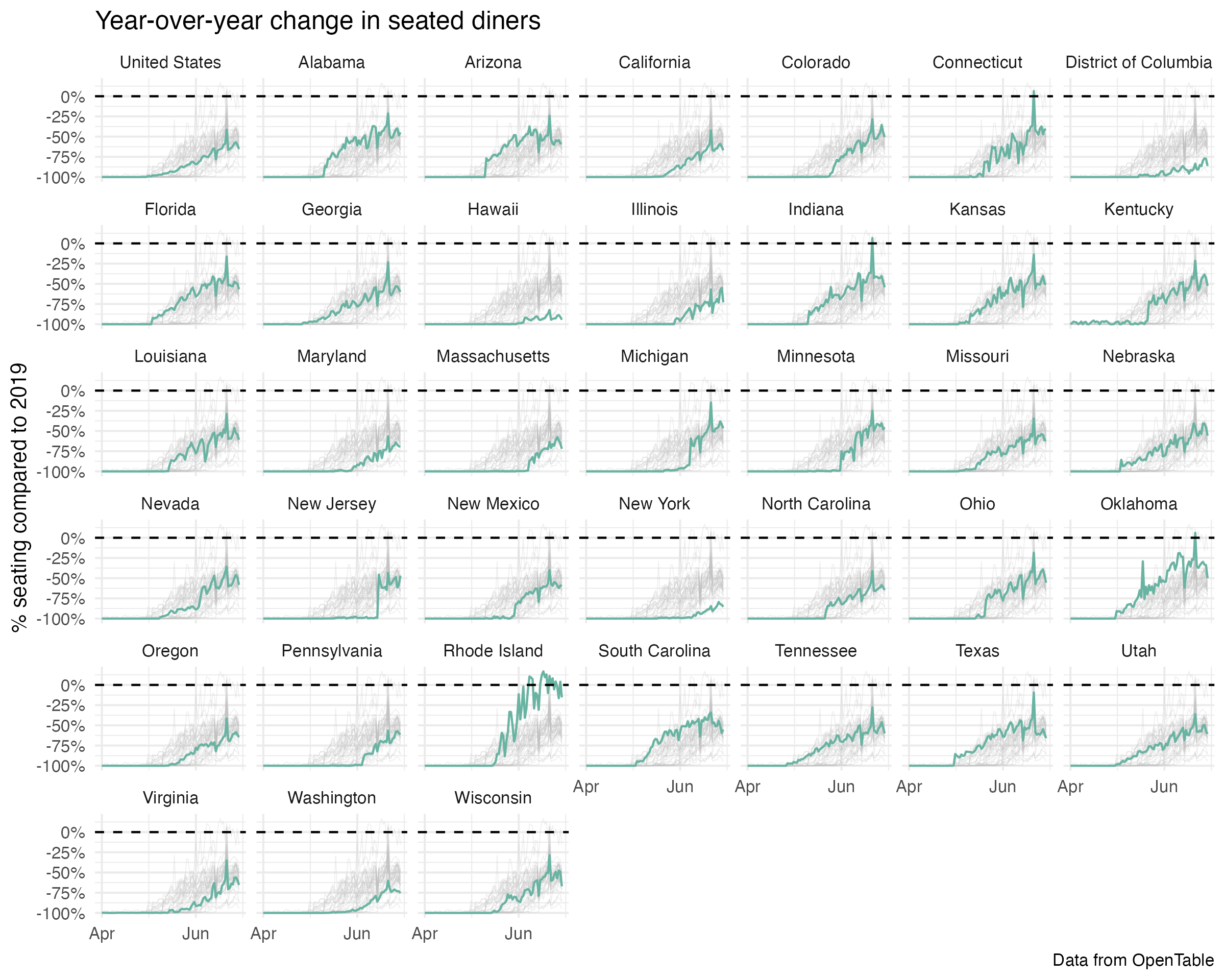
Incorporate geography
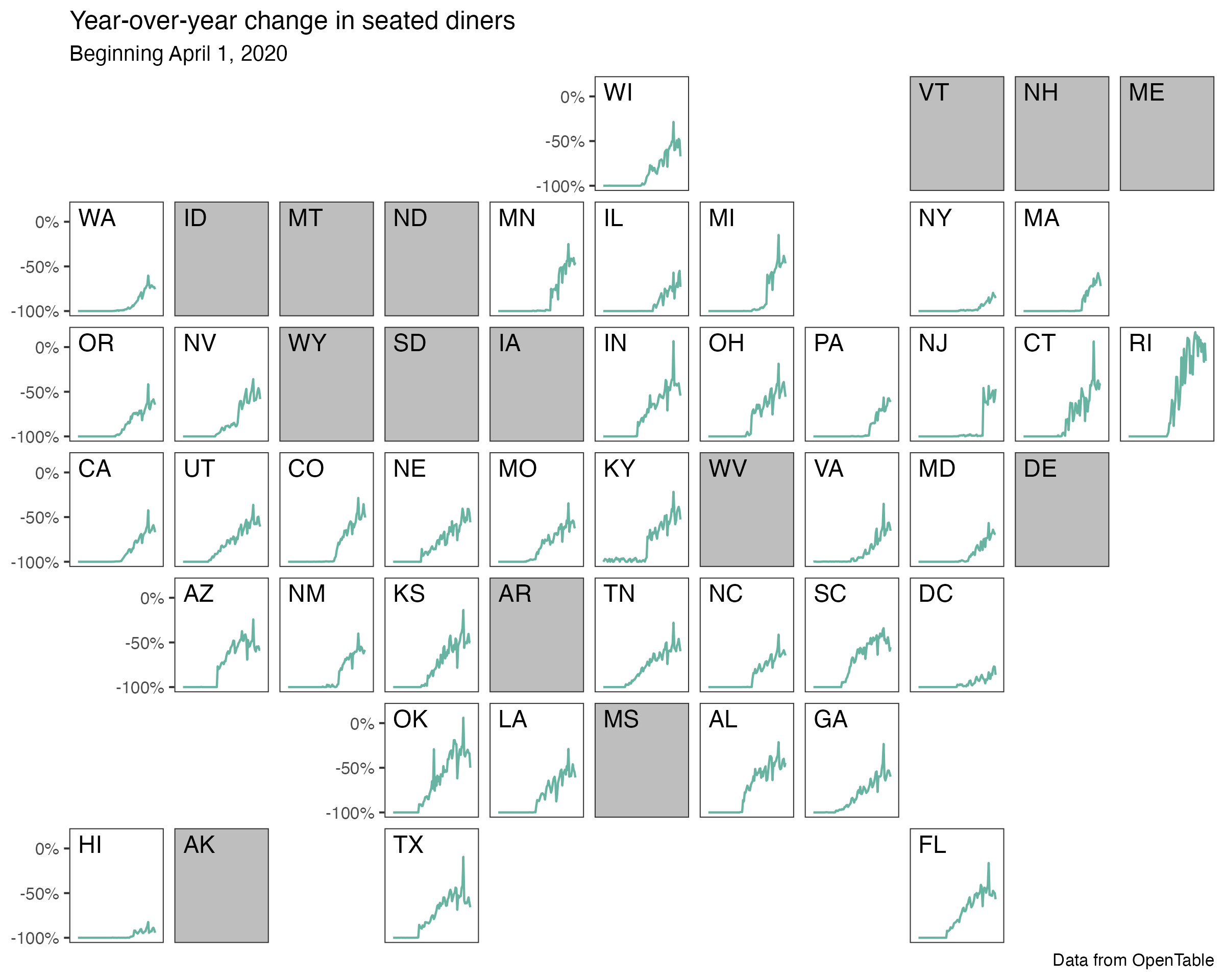
Tell a different story
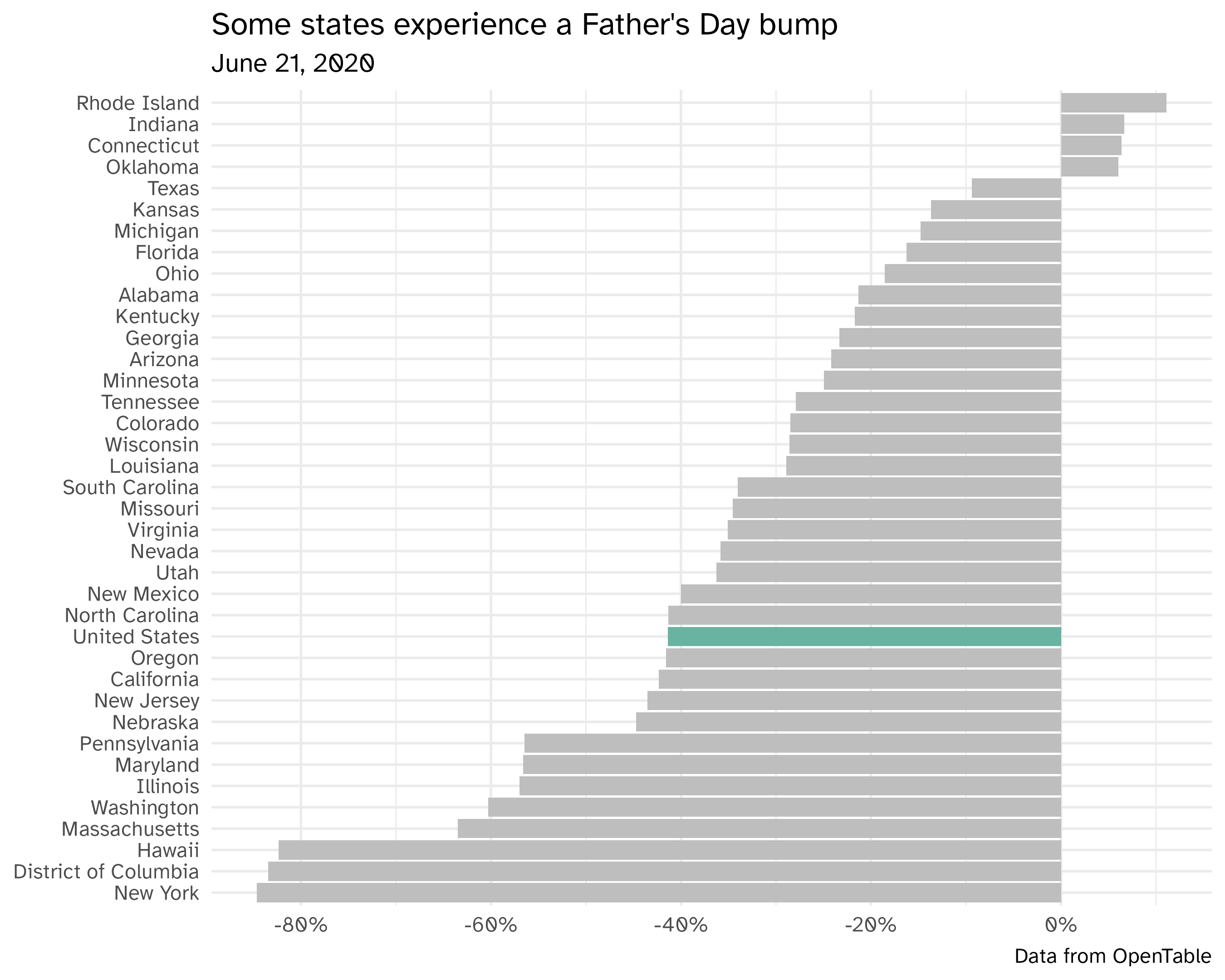
Application exercise
ae-10
Instructions
- Work with your project team members
- Pick one of the questions and charts you have been designing for your presentations
- Identify the story - what are you telling using the chart?
- Identify at least three design choices you can implement to improve your storytelling
Wrap up
Wrap up
- Use data to effectively tell a story
- Use the right plot(s) for your story
Acknowledgments
- Slides derived in part from STA 313: Advanced Data Visualization
Our backyard deer

